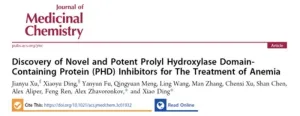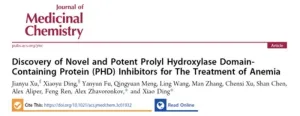(Press-News.org) Study analyzed a West Virginia policy that tailored duration limits to a patient’s clinical setting
Researchers found a 27-57% reduction in prescription length with the tailored policy
Additional research is needed on potential consequences of limits, such as use of illicit opioids for pain relief
CHICAGO --- Many states have passed new laws that place restrictions on the duration of first-time opioid prescriptions to help address the opioid epidemic.
While most laws are one-size-fits-all, policies more tailored to the patient, such as their age or clinical setting (outpatient clinic, emergency room, etc.), were more effective at reducing the length of opioid prescriptions, reports a new Northwestern Medicine study.
It is the first study to examine the effectiveness of setting-specific opioid prescribing durations.
The study analyzed 2017 to 2019 data from West Virginia, a state at the epicenter of the opioid crisis that in 2018 instituted a unique, setting-specific approach to prescription-duration limits. These included a seven-day limit for adult patients in outpatient hospital departments and offices; a four-day limit for adult patients in emergency departments and a three-day limit for pediatric patients in any clinical service location.
This is in contrast to other states, which imposed the same prescription-duration limit for all patients (e.g. Kentucky, three days or Pennsylvania, seven days), regardless of their clinical setting or age.
The study found tailored duration limits helped reduce the length of opioid prescriptions. There was a 56.8% reduction in prescription length amid patients in hospital and outpatient settings (seven-day limit); a 37.5% reduction in prescription length amid patients in emergency department settings (four-day limit); and a 26.5% reduction in prescription length amid pediatric patients (three-day limit).
“We have clear results that an opioid duration-limiting policy can work to reduce the length of prescriptions, but not as most states have designed them,” said corresponding author Lindsay Allen, assistant professor of emergency medicine at Northwestern University Feinberg School of Medicine.
The study will be published Jan. 19 in JAMA Health Forum.
A reduction in high-dose and follow-up prescriptions
The study also found reduced prescription lengths did not result in physicians writing stronger or more follow-up prescriptions for adults as a way of compensating for shorter prescription durations, which was a potential concern, Allen said. Instead, the policy was associated with reductions in high-dose and follow-up prescriptions in the outpatient setting.
“This could be because the law heightened concerns about lengthy opioid use, which in turn drove down doctors’ willingness to write follow-up prescriptions,” Allen said. “Also, prior to the 2018 policy, longer initial prescriptions may have built up tolerance in patients, which did not happen with shorter initial prescriptions.”
Origin of prescription-duration limits
To help fight America’s opioid epidemic, the U.S. Centers for Disease Control and Prevention (CDC) in 2016 issued recommended guidelines to help primary care clinicians weigh benefits and risks of opioid treatment for chronic pain. That guidance led to states setting their own prescribing limits, which were often one-size-fits-all (not tailored to patients’ unique circumstances), and a misapplication of the CDC guidelines.
“This is what happens when we have legislators making laws without consulting medical or policy experts,” Allen said. “The laws were not based on any evidence about what the ‘right’ opioid duration limit is. That’s why we had some states making a three-day limit while others made a 14-day limit. It was a mess.”
Because of these inconsistencies, there have been mixed findings on the effectiveness of these policies, Allen said. In 2022, the CDC updated its guidelines.
A focus on pediatric and Medicaid-enrollee prescriptions
Pediatric patients have not been independently studied in prior work on prescribing limits. This is an important knowledge gap, given recently documented increases in opioid-associated deaths in the pediatric population, Allen said.
The study also focused on Medicaid enrollees, who have been disproportionately affected by the opioid epidemic. Medicaid patients are prescribed more opioids than non-enrollees, largely reflecting that those who qualify for the program (whether through disability or not) are more likely to have chronic conditions and comorbidities that require pain relief.
Participants in the study were between 12 and 64 years old, did not actively have cancer and were not covered by Medicare. The sample included 44,703 individuals before the 2018 policy was imposed and 16,746 after the 2018 policy went into effect.
Allen said the next steps in the research are to look at potential risks of such limits.
“We know that reduced prescription length is associated with reduced risk for opioid dependence, which, in theory, is good, but we need to do more research to determine if these limits actually reduce downstream opioid use disorder or if they could result in unintended consequences, like seeking out pain relief from illicit opioids,” Allen said.
END
One in three children who suffer from bacterial meningitis live with permanent neurological disabilities due to the infection. This is according to a new epidemiological study led by Karolinska Institutet and published in leading medical journal JAMA Network Open.
For the first time, researchers have identified the long-term health burden of bacterial meningitis. The bacterial infection can currently be cured with antibiotics, but it often leads to permanent neurological impairment. And since children are often affected, ...
Researchers with McMaster University have created the instruction manual that will help scientists across the globe find hard to detect B cells.
Led by PhD student Alyssa Phelps and Department of Medicine Assistant Professor Josh Koenig, researchers wanted to chart a path to finding these cells as part of their work in understanding food allergies. Their work was published in the journal Nature Protocols on Jan. 19, 2024.
B cells are a type of immune cell that makes antibodies. These cells help fight conditions like cancer and infections but can also cause autoimmune diseases and allergies.
"One of the big problems with trying to study these B ...
HOUSTON – (Jan. 19, 2024) – Amanda Marciel describes her current research, supported by a CAREER Award from the National Science Foundation, as an effort to understand and make “really soft, stretchable stuff.”
Expressed more formally, she works at the molecular level to design branch elastomers that return to their original shape after being stretched.
“What I’m doing is creating synthetic networks that have a gel-like softness and are highly elastic for such applications as stretchable ...
Clinical stage generative artificial intelligence (AI)-driven biotechnology company InSilico Medicine (“InSilico”), today announced that the Journal of Medicinal Chemistry, an ACS Publications journal focusing on critical studies about molecular structure and biological activity, has published the company’s discovery of a novel PHD inhibitor for the treatment of anemia. The academic breakthrough is powered by Chemistry42, its proprietary generative chemistry platform consisting of more than 40 selected generative models.
As suggested in previous studies, the inhibition ...
Insilico Medicine(“Insilico”), a clinical stage generative artificial intelligence (AI)-driven drug discovery company, recently published an early research that it has identified MYT1 as a promising new therapeutic target for breast and gynecological cancer, and discovered a series of novel, potent, and highly selective inhibitors specifically targeting MYT1. These findings were supported by Insilico’s AI-driven generative biology and chemistry engine and published in the Journal of Medicinal Chemistry in Dec 2023.
Across ...
Professor Yoon-Kyoung Cho from the Department of Biomedical Engineering at UNIST has been elected as a member of the National Academy of Engineering of Korea (NAEK), the most prestigious organization in the field of engineering in Korea.
On January 4, the National Academy of Engineering of Korea (NAEK) announced the election of 50 new members, comprising 25 academic and 25 industrial figures, in recognition of their distinguished and ongoing achievements in original research. Membership in NAEK is considered one of the highest professional distinctions for engineers. Professor Cho’s name appeared ...
A groundbreaking study conducted by Professor Jiyoung Park and her research team in the Department of Biological Sciences at UNIST has identified FAM3C, a metabolism-regulating signaling molecule produced by cancer-associated adipocytes (CAAs), as a key regulator of breast cancer progression within the tumor microenvironment (TME). The findings, published in the prestigious academic journal Cancer Research, shed light on the potential for targeted therapies in the treatment of breast cancer.
The study demonstrates that overexpression of FAM3C in cultured adipocytes significantly reduces cell death in both adipocytes and co-cultured breast cancer ...
There are approximately 425 million people worldwide with diabetes. Approximately 75 million of these inject themselves with insulin daily. Now they may soon have a new alternative to syringes or insulin pumps. Scientists have found a new way to supply the body with smart insulin.
The new insulin can be eaten by taking a capsule or even better, within a piece chocolate.
Inside these we find tiny nano-carriers to which the insulin is encapsulated. The particles are 1/10,000th the width of a human hair and so small that you cannot even see them under a normal microscope.
“This ...
MIAMI, FL – January 19, 2024 – Researchers from Miami Cancer Institute, part of Baptist Health South Florida, today published a study in Trends in Cancer that analyzes the use of tissue-agnostic therapeutics in patients with primary brain tumors (PBTs). The publication describes the current and potential impact of tissue-agnostic therapies on the management of PBTs. As part of the publication, the researchers discuss data from clinical trials of tissue-agnostic targets for PBTs in the context of challenges in managing these tumors. They also describe additional tissue-agnostic ...
A McGill-led team of researchers have made an important discovery shedding light on the genetic basis of a rare skeletal disorder. The study, published in Nature Communications, reveals that a defect in a specific gene (heterozygous variants in the matrix Gla protein, or MGP) may cause a disorder that affects the structure of connective tissues that supports the body.
MGP is a special protein found in blood vessels and cartilage that helps prevent the hardening of these tissues in the body. If MGP is completely missing, it can lead to Keutel syndrome, a rare condition where tissues become calcified, causing issues in the skeleton and blood vessels.
However, in this case, ...






